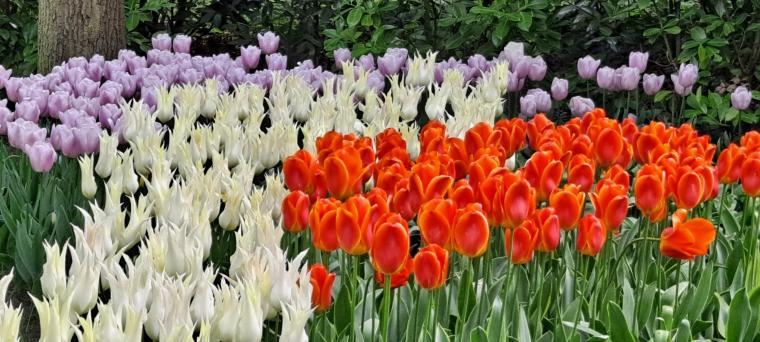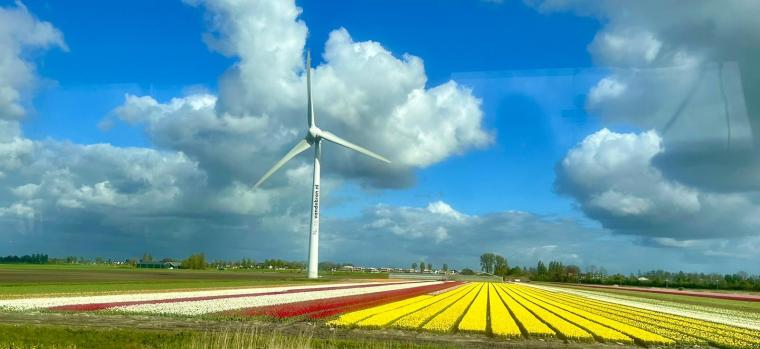Some University of Missouri Extension horticulture specialists recently traveled to the Netherlands to experience the height of the tulip season. The specialists toured the vast Keukenhof botanical garden in Lisse, Netherlands, where about 7 million tulip bulbs are planted each year.
MU Extension horticulturist Debi Kelly described the experience of seeing all the varieties, shapes and colors of tulips as “totally amazing.” The trip was a professional development study tour organized by the National Association of County Agricultural Agents. Extension specialists and Extension Master Gardeners from across the country participated.
History of tulips
Tulips originated in Kazakhstan. They were brought to the Netherlands in 1593. The soil and temperature of the Netherlands are perfect for tulip growing and production. Breeding began of more than 1,000 varieties by 1630, with 500 being uniquely Dutch. A small number of mother bulbs were available per variety, making them rare.
Seasonal trade began with only four months per year. Due to scarcity, the so-called “tulipmania” craze began. Each year bulbs rose in price, mainly due to the fashion and popularity of the flower. One tulip variety (red and white Semper Augustus) cost 5,000 florins at a time when the average yearly salary was 1,500 florins. In 1637, the tulip market crashed, essentially becoming the first market crash leading to bankruptcies.
Tulips are maintained at Hortus Bulborum, the historic flower bulb garden of the Netherlands. Hortus’ collection contains more than 3,500 varieties, including more than 2,500 tulips. The oldest cultivated tulip, Duc van Tol Red and Yellow, dates to 1595 and is showcased at Keukenhof. The Netherlands now has 60,000 acres of land dedicated to tulips for cut flowers or cultivation of the bulbs.
Tulip breeding and production
New tulip varieties are created by interbreeding different varieties through cross-pollination. Male pollen is applied from one tulip to the female pistil of another. Each produces about 200 seeds.
It takes five years for seeds to develop into flower buds and when a flower will first appear. Then it can be assessed for its appearance. Traits are selected and cross-pollination occurs again. It can take 25 years before the bulb is ready for commercial sale.
Machinery in production fields cuts off all the blooms for bulb production. “When you are looking at bulb production, you do not want the flower to make seed,” said MU Extension horticulture specialist Katie Kammler, who was also on the trip. “Because then the plant puts all its energy into making seed. So, they run equipment over the field to cut the flower blooms off so the plant concentrates on producing that bulb to size it up for sale.”
Photos
Red and white striped tulips
Red and white striped tulips at Hortus Botanicus. Photo by Katie Kammler.
Tulip field
Tulip field at Keukenhof in the Netherlands. Photo by Patrick Byers.
Tulips
Tulips at Keukenhof, Netherlands. Photo by Debi Kelly.
Tulip field and windmill
Tulip field and windmill as seen on tour of Keukenhof. Photo by Debi Kelly.
Writer: Julie Harker



